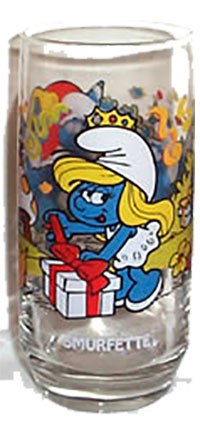Although what you just viewed is technically a commercial for a restaurant, it certainly has the feel of toy commercial. The actual product placement is front and center. McDonalds and the movie studio definitely are not being subtle about what they are selling in this commercial. The ad means what it says, “Kids come watch ‘The Lego Movie,’ and oh yeah you can get milk and apples with your Happy Meal. But, mostly come see “’The Lego Movie.’”
This practice is certainly not new, in fact movie studios and fast food restaurants have had these partnerships for decades now (Bernhardt, Wilking, Adachi-Mejia, Bergamini, & Marijnissen, 2013). The restaurant works with the film company to produce a toy or product. Both a character or characters from the movie and a restaurant logo are placed prominently on the product or the meal container. In the past restaurants pretty much advertised the product and movie barely mentioning food at all. Take a look at this Happy Meal commercial from The Incredibles. I think character Violet eventually walks away with a Happy Meal at the very end.
Get the message – Kids come watch ‘The Incredibles.’
If you were from another planet and watched this commercial from 1980’s you would probably think Burger King sold drinking glasses and maybe soda.
These advantageous partnerships became a little more inauspicious during the last few years as the American child obesity rate increased (Abramowitz, 2006). McDonalds was accused of being the biggest offender by marketing unhealthy foods to kids with cool movie tie-ins and toys. This supposedly led to Disney and McDonalds severing their tie-in relationship in 2006, but the restaurants remain in the Disney theme parks (Abramowitz, 2006).
McDonalds then partnered with DreamWorks SKG and 20th Century Fox for deals involving more films aimed at children. The movie tie-ins were for “Alvin and the Chipmunks: The Squeakquel”, “Night at the Museum: Battle of the Smithsonian” and “Ice Age: Dawn of the Dinosaurs” (York, 2009). Burger King also has similar deals with movie studios. However, their tie-ins seem to be aimed at a slightly older audience, viewers of “Star Trek,” “Transformers: Revenge of the Fallen”, “GI Joe: Rise of the Cobra”, “Iron Man”, and “Indiana Jones and the Kingdom of the Crystal Skull” (York, 2009).
If Happy Meals and King Jr Meals are the sole culprits of childhood obesity, the cause does not seem to rely on the images in the advertising. Ads aimed at children as stated above are about the product and not the food. Research shows that images of actual food averaged 20 percent of the screen time in kids’ ads, but 45 percent of the screen time in adult ads (Robert Wood Johnson Foundation, 2013).
The Federal Trade Commission, Bridging the Gap, and the Yale Rudd Center for Food Policy & Obesity said that their research shows that fast food chains spent over $714 million in 2009 at ads aimed at children (Robert Wood Johnson Foundation, 2013). However, it also revealed while some fast-food companies have slightly progressed at making the quality of kids’ meals healthier, the number of television ads for other higher-caloric meals significantly escalated (Robert Wood Johnson Foundation, 2013).
Do these movie tie-ins significantly link to childhood obesity? In the decades since the introduction of these meals, the portion size has also changed (Bernhardt, Wilking, Adachi-Mejia, Bergamini, & Marijnissen, 2013). Could that be the issue, rather than if the Minions toys are inside?

Full confession, I might still be in possession of a Smurfette glass from Hardees circa 1983. “The Smurfs and the Magic Flute” was released that year, and for the record I have never been a fan of Hardees’s food. Just saying.

Sources:
Abramowitz, R. (2006, May 8). Disney Loses Its Appetite for Happy Meal Tie-Ins As more children lean toward obesity, Mickey and Co. lean away from McDonald’s fast food. Retrieved March 19, 2015, from Los Angeles Times: http://articles.latimes.com/2006/may/08/entertainment/et-mcdonalds8
Bernhardt, A. M., Wilking, C., Adachi-Mejia, A. M., Bergamini, E., & Marijnissen, J. (2013). How Television Fast Food Marketing Aimed at Children Compares with Adult Advertisements. PLoS One , 8, 1-7.
Robert Wood Johnson Foundation. (2013, August 28). Fast-Food Television Ads Use Toys, Movies to Target Kids. Retrieved March 15, 2016, from New study suggests industry’s efforts to self-regulate child-directed marketing practices are ineffective.: http://www.rwjf.org/en/library/articles-and-news/2013/08/fast-food-television-ads-use-toys–movies-to-target-kids.html
York, E. B. (2009, May 19). Coming Soon to McDonald’s Happy Meals: 20th Century Fox Fast Feeder Partners With Studio for Five Movies, Will Kick in Marketing Dollars. Retrieved March 18, 2016, from Ad Age: http://adage.com/article/madisonvine-news/mcdonald-partners-20th-century-fox-movies/136652/

2 Responses to Movie Marketing Tie-Ins, Product Placement & Obesity